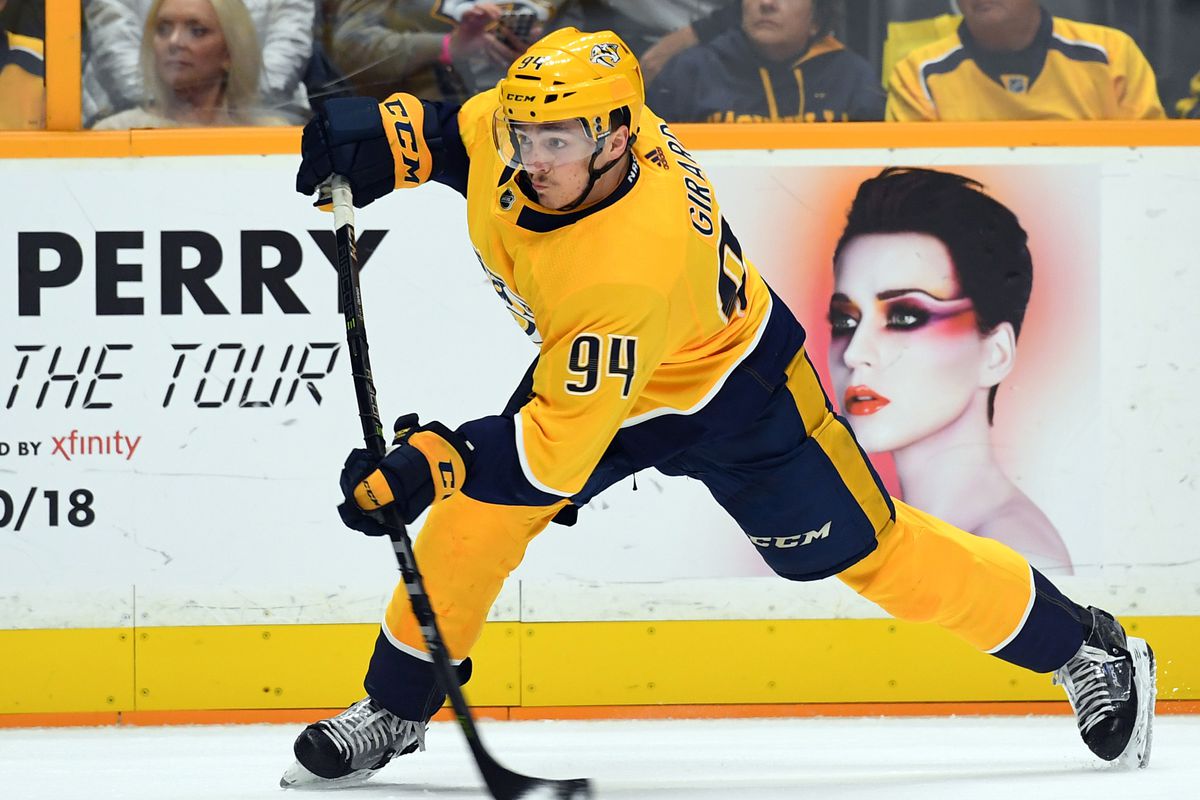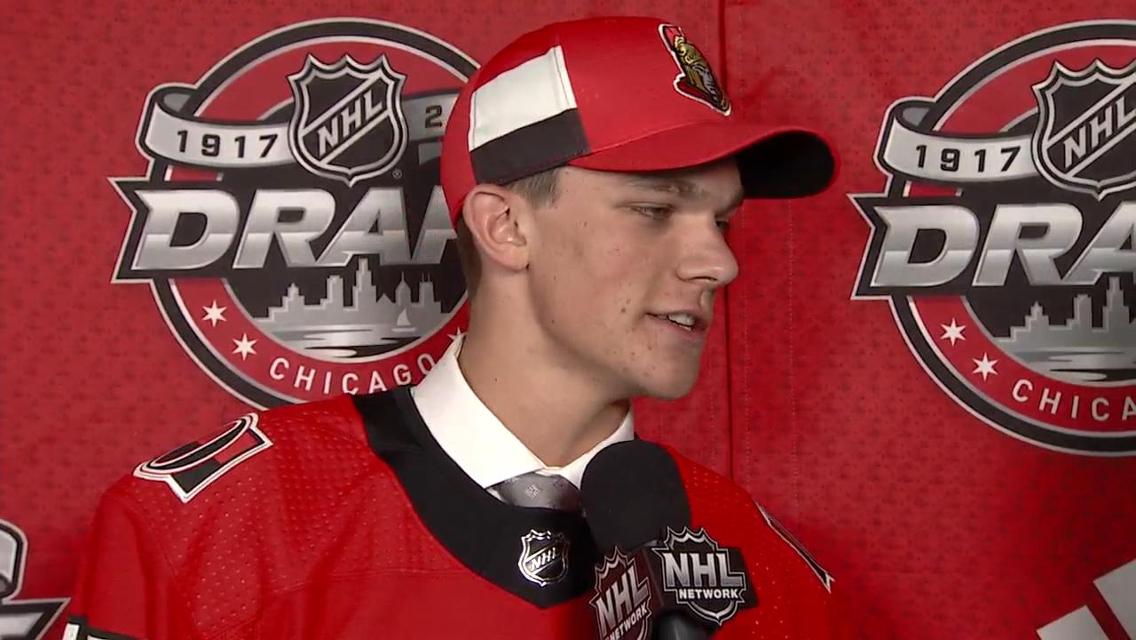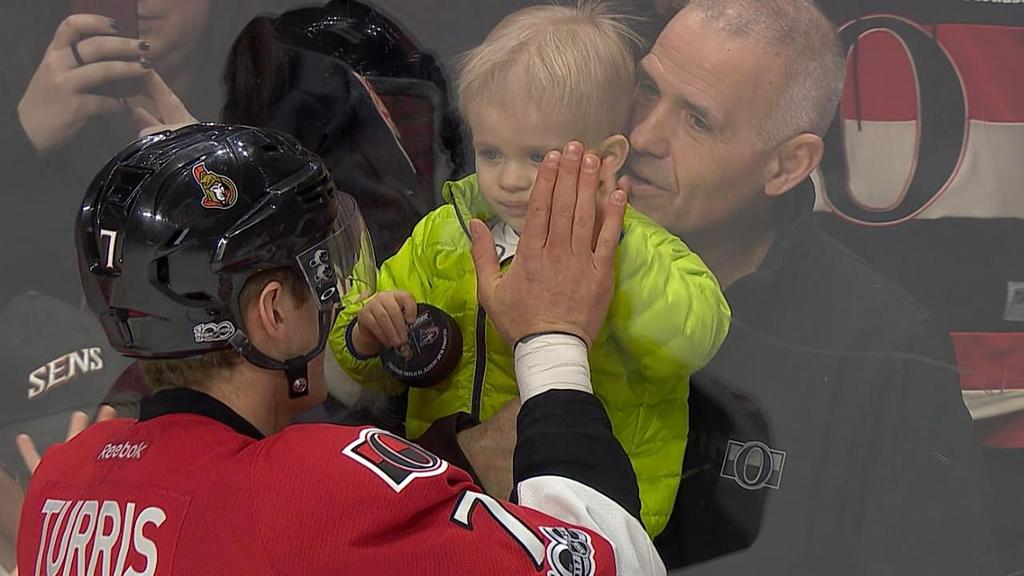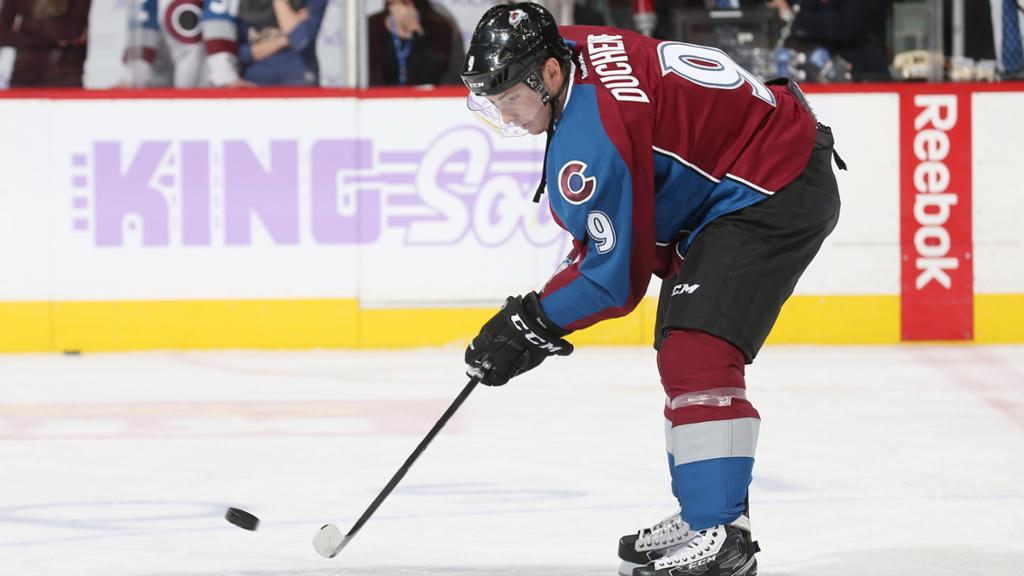Breaking Down the Duchene Trade
November 6, 2017
By Grant McCagg
It’s always interesting to evaluate an NHL deal that involves more than two teams as, inevitably, it involves a lot of pieces, some that help now and some that will need to be evaluated in a decade or so.
Yesterday’s trading of Matt Duchene from Colorado to Ottawa is one of those such deals, as two teams feel they improve right now, and the third is very much looking towards the future.
Let’s take a look at each team’s gains and losses from this mega-deal:
Colorado – loses Duchene; receives first, second and third-round draft picks, Vladislav Kamenev, Samuel Girard, Andrew Hammond and Shane Bowers.
Sometimes it pays to be patient. Colorado GM Joe Sakic has gotten loads of grief for not dealing Duchene the minute he requested a trade- it now seems like it was years ago. He was supposed to be gone by the trade deadline, then at the draft…then this past summer, but Sakic held out for what he thought would be the best deal. He soon discovered that teams weren’t all that willing to surrender key pieces that were already on the team in addition to a first rounder and a blue-chip prospect, so Sakic ended up waiting until he could wrestle several blue-chip prospects and multiple picks from two teams instead of one.
That patience may well end up paying off, but as is always the case when you trade for the future, only time will tell just how much Colorado will benefit from its many assets. Prospects will have to keep developing and the Avalanche will need to take advantage of their draft picks. Obviously, if Ottawa misses the playoffs this season, the deal looks even better for them as they’ll get a lottery pick, but Ottawa included a provision where if Colorado ends up with a top-ten pick after the lottery, the pick is protected and Colorado wouldn’t receive Ottawa’s first-round pick until 2019.

Samuel Girard brings a much-needed skill upgrade to Colorado’s blueline, and given the club’s lack of depth at the position, may even step into a full-time spot on the blueline. Girard surprised the experts and made Nashville out of training camps when the club ran into some injury woes. Girard undoubtedly has the skating and puck skills to play at the NHL level already at the age of 19, but he would probably be best served getting sent back to junior before he plays nine games some time in December so he can play in the World Junior tournament and eventually get dealt to a team in the QMJHL that is a serious contender to compete for a Memorial Cup berth.
Girard still needs work to do in the defensive end..he needs to get stronger and learn how to deal with heavy forechecking pressure from faster, stronger forwards than what he’s faced at the junior level. Ideally, he is at least a year away from being a top-four NHL defenceman, and it would behoove the Avalanche not to rush him so that the trade “looks good” right away.
Even though Girard is the player in the deal that made an NHL roster out of camp, don’t be surprised if Kamenev ends up being the first Colorado pickup that ends up having an impact for the club, and it’s also not an impossibility that he ends up being the best player traded to Colorado.
From a physical and defensive standpoint, Kamenev is likely more NHL-ready than Girard, and the Avalanche are hoping that he can replace Duchene in the lineup sooner rather than later. It will take him some time to find his offensive chops in the NHL, but Kamenev has the competitiveness and smarts to win an NHL spot at some point this season, perhaps right away. Certainly, there is a hole to fill in Colorado’s lineup right away with the departure of Duchene.

Shane Bowers gives the Avalanche another forward prospect who has second- or third-line potential; in all likelihood third-line, and he’s one of the safer picks from last year’s draft as he has the size, skating, hockey sense and competitiveness to play at any level once he gains enough strength and maturity. Bower may never put up big offensive numbers for Colorado but he will help them win important games.
With MacKinnon, Jost and Kamenev ahead of him at center in the pecking order, there is a strong possibility that Bowers ends up playing on the wing for Colorado down the road, and he has shown that he is more than capable playing on the wing as he’s strong along the wall and good on the cycle. Many scouts contended last season that Bowers is best suited to play the wing, and after this trade, unless Colorado sees him as a future fourth liner, and that’s unlikely given that they just traded for him, Bowers will likely end up on the wing.
Sakic was shrewd enough to pick up a second-and third-round pick in addition to the first rounder, and if the first-rounder doesn’t turn into an impact player, both selections are high enough that in the long run, they may end up being the best players for the Avalanche down the road; that’s both the beauty and curse of dealing a top-line player for a multitude of future assets…there is a ton of unknown.
With Cale Makar and Girard coming down the pipeline and likely to be in the Colorado lineup over the next two seasons, it’s also a good bet that Sakic will be looking to deal fellow undersized offensive defenceman Tyson Barrie at some point in the next two seasons.
The reality is this – even though they started the season 8-5, the Avalanche are not a good bet to make the playoffs this year, especially with Duchene having to be dealt, and unless they continue to surprise will be getting another high lottery pick, so Sakic’s decision to pick up six future assets for the former third-overall pick to go along with the club’s young core of Nathan MacKinnon, Gabriel Landeskog, Tyson Jost, Mikko Rantanen, and Makar…the Avalanche in 3-4 years are a strong bet to be one of the top young clubs in the NHL. Yes…even without Matt Duchene.
Nashville – Loses Girard, Kamenev and a 2nd-round pick; receives Kyle Turris from Ottawa.
After a trip to the Stanley Cup finals last season, Nashville GM David Poile is banking on his club being good enough to once again represent the western conference in the 2018 playoff run, and he also knows that until the team found an adequate replacement for Mike Fisher that could also be offensive backup for Ryan Johansen -who is returning from a serious injury and yet to score a goal this season – the club wasn’t going to have the strength down the middle required to once again make it through three rounds this coming spring.
In fact…with injury woes on the blueline and the lack of offensive support at center so far this season, Nashville at the time of this deal sits outside of the playoffs, and an upgrade was needed now if the club even hopes to make the playoffs this season. As Nashville showed last year…all you need is to make the dance…and then who knows who can waltz to the finals.

Turris was not likely going to re-sign in Ottawa, so Nashville decided to become the key third team in the deal as Ottawa was willing to give up an impending UFA in Turris, but not a key young piece like Colin White or Logan Brown. Poile saw an opportunity to deal for a much-needed top-two center without giving up any regular roster players, and then promptly signed him to a long-term contract that will keep him in Nashville for the next six years for $36M.
Nashville is in “win now” mode in the respect that the club could be serious contenders over the next five years. At that point the club’s vaunted defence core will all be either in their early or mid 30’s and Rinne will be 40, so it made sense to add another player who will be in his playing prime over that period while not giving up any assets that will be in their true primes for at least another 3-4 years.
Ottawa – Loses Turris, Bowers, Hammond, a first- and a third-round pick; receives Duchene.
The Senators are counting on Duchene once again equalling the 70-point production that he reached in 2013-14. Since then his season high is 59 points while Turris has enjoyed a 64-point season. Since 2013-14, in fact, Turris has scored more points per game than Duchene, so for some at least there will be wonderment about why Ottawa also threw in their most recent first-round pick in Bowers and a first and third in 2018 to swap centers who essentially are producing at the same pace.
A number of hockey pundits have even suggested that Duchene is not a true number-one center at the NHL level, and while that could perhaps be argued, he will not hurt a team centering a top line as his speed, smarts and competitiveness make him an asset on the ice – one that coach Guy Boucher is bound to appreciate. I would expect Duchene to become a Boucher favourite right away and be his go-to center in most key situations.

Ottawa will be hoping that Duchene’s lower point totals the past few seasons were directly linked to MacKinnon taking first-line center minutes and linemates away from Duchene, who played on the wing quite a bit as well.
He was deemed good enough to play for Canada in both Olympics and World Cup events, so there’s no question that he’s still a highly-regarded player in NHL management and coaching circles.
Time will tell whether this trade ends up improving the Senators in the short term, but the club must have been concerned that Turris was not going to re-sign in Ottawa, and eventually he was going to have to be traded anyway, so picking up a player who is at least of equal value and two years younger made sense as there won’t be many players of Duchene’s ilk available between now and the trade deadline.
Bowers and the first-round pick became more expendable with the excellent training camp performances by Logan Brown and most importantly Alex Formenton, who frankly outplayed Bowers in camp, and moved ahead of him on the depth chart. With Duchene, Colin White, Filip Chlpaik and Brown at center, odds were good Bowers would have been moved to the wing anyway, and he was likely destined to be at best a third-line winger on the club, so his value was not perhaps as high as the club had hoped when it selected him last June. The preponderance of talented young forwards in the system also made the trading of a first-round pick more palatable as well – the prospect cupboard right now is far from bare.
As is always the case – one should not jump to judgement on who were the winners and losers on such a complicated trade for at least five years. By then we’ll have a better idea of how Colorado’s young assets have developed, and we’ll also see if Turris helped lead Nashville back to the Cup finals or even a Cup victory, and if Duchene can ever match or exceed the offensive production that was expected of him since he hit the 70-point mark at the age of 23.
Nashville gave up two “B” prospects in deal & 2nd rd pick for Turris… Great deal for Nashville